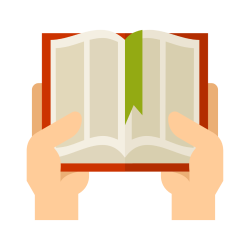
How to use Quotation Marks
Quotation Marks
| EXAMPLE |
|---|
| "I prefer my cherries chocolate covered," joked Alyssa. |
| Jackie kept repeating, "Good dog, good dog!" |
| "How long will it take you?" asked Mom. |
| EXAMPLE |
|---|
| "I have wanted to buy my own truck for a long time," said Jordan. |
| EXAMPLE |
|---|
| "I have been saving money for two years. I almost have enough for the down payment," Micah told him. |
| EXAMPLE |
|---|
| "I guess I should start saving money, then," replied Jordan, "if I am ever going to buy one." |
| EXAMPLE |
|---|
| Alyssa joked that she preferred her cherries covered with chocolate. |
| Jackie told her dog that she was a good dog. |
| Indirect: | Mom asked how long it would take us to get to the Grand Canyon. |
|---|---|
| Direct: | Mom asked, "How long will it take us to get to the Grand Canyon?" |
| EXAMPLE |
|---|
| Jailen said, "Scientists hope that someday people will live on Mars." |
| Adrian answered, "That sounds like science fiction to me." |
| EXAMPLE |
|---|
| Jailen said, "Scientists hope that someday people will live on Mars." |
| Adrian answered, "That sounds like science fiction to me." |
| EXAMPLE |
|---|
| "Scientists hope that someday people will live on Mars," said Jailen. |
| "That sounds like science fiction to me," answered Adrian. |
| EXAMPLE |
|---|
| "Scientists hope," said Jailen, "that someday people will live on Mars." |
| "That sounds," answered Adrian, "like science fiction to me." |
| EXAMPLE |
|---|
| Fred asked, "What is your name?" |
| Sam yelled over the roaring crowd, "My name is Sam!" |
| EXAMPLE |
|---|
| "What," Fred asked, "is your name?" |
| "My name," Sam yelled over the roaring crowd, "is Sam!" |
| Quoting one person: | Our teacher told us, "This assignment is due Friday." |
|---|---|
| Quote within a quote: | Tracy said, "Our teacher told us, 'This assignment is due Friday.'" |
| EXAMPLE |
|---|
| You used the word then too often in your essay. |
| EXAMPLE |
|---|
| Her name is Elizabeth, but she has always been called "Beth." |
| EXAMPLE |
|---|
| I spent my "vacation" working hard. |
| EXAMPLE |
|---|
| Although gelato translates to "ice cream," the two desserts are not exactly the same. |
| Italics | Quotation Marks | Examples |
|---|---|---|
| Book Book-length play |
Chapter Poem Essay Short story Short (1-2 act) play |
I read the fourth chapter, "Acrobatic Kites," in the book Best Kite Building Ever. |
| Magazine or Newspaper | Article | The article "Four Fabulous Heroes" in last week's New York Times was inspiring. |
| Television series | Episode | "Goodbye, Farewell and Amen" was the most watched episode of M*A*S*H*. |
| Movie | Scene (You would only refer to a scene when referring to the movie script itself, and only if that scene has an actual title.) | I think I have watched The Sound of Music at least twenty times. |
| CD or album | Song | My favorite song is "Isn't She Lovely" from Stevie Wonder's album Songs in the Key of Life. |
| Website | Web page | I found this information on Wikipedia on the page "William Crookes." |
| Building | N/A | While we were in New York, we visited the Empire State Building. |
| Vehicle | N/A | The space shuttle Discovery is now in Washington, D. C. |